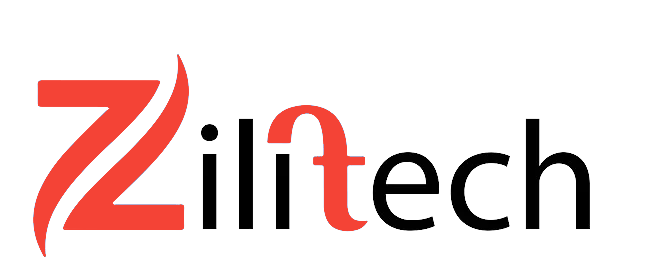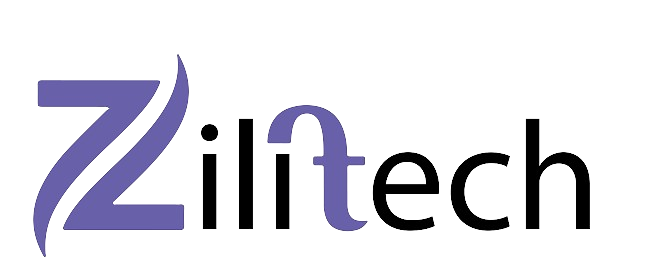In the fast-paced world of modern business, keeping track of employee attendance isn’t just a mundane task—it’s a crucial aspect of managing a productive and efficient workforce. Whether you’re running a small business or a large enterprise, attendance tracking software can revolutionize the way you manage your team’s time and attendance. Let’s dive into the best solutions available and explore why they are indispensable for today’s businesses.
What Is Attendance Tracking Software?
Attendance tracking software is a digital solution that automates the recording of employee work hours. It replaces traditional methods like punch cards or manual time sheets with a more accurate, streamlined system. This software tracks clock-ins, clock-outs, breaks, and overall working hours, often with advanced features like GPS tracking, biometric verification, and integration with payroll systems.
Importance of Attendance Tracking
Why is tracking attendance so vital? For starters, it ensures that employees are paid accurately for the time they work. It also helps in maintaining discipline and accountability within the team, reducing instances of tardiness and absenteeism. Moreover, accurate attendance records are crucial for compliance with labor laws and regulations, avoiding potential legal issues.
Evolution of Attendance Tracking Systems
Attendance tracking has come a long way from the punch cards of the past. Modern systems offer real-time tracking, mobile capabilities, and seamless integration with other business tools. This evolution has made it easier for businesses to manage their workforce efficiently and adapt to the changing needs of the workplace.
Why Businesses Need Attendance Tracking Software
Improving Employee Productivity
With automated attendance tracking, employees no longer need to manually record their hours, reducing the risk of errors and saving valuable time. This allows them to focus more on their core tasks, boosting overall productivity.
Streamlining Payroll Processes
Integrating attendance data with payroll systems simplifies the payroll process. It ensures that employees are paid accurately based on the actual hours worked, reducing payroll errors and saving time for HR personnel.
Enhancing Compliance and Reporting
Accurate attendance records are essential for compliance with labor laws and regulations. Attendance tracking software generates detailed reports, making it easier for businesses to demonstrate compliance and avoid potential legal issues.
Key Features of Attendance Tracking Software
Automated Time Logging
One of the core features of attendance tracking software is the automatic logging of employee work hours. This reduces the need for manual entry, minimizing errors, and saving time.
GPS and Biometric Verification
Many modern systems include GPS tracking and biometric verification to ensure that employees are clocking in and out from authorized locations and are who they say they are. This adds an extra layer of security and accountability.
Real-Time Data Access
Real-time access to attendance data allows managers to monitor employee attendance and address any issues promptly. It also enables employees to view their own attendance records, fostering transparency.
Customizable Reports
Customizable reporting features enable businesses to generate detailed attendance reports tailored to their specific needs. These reports can be used for payroll, compliance, and performance analysis.
Integration with HR and Payroll Systems
Integration with HR and payroll systems ensures that attendance data is seamlessly transferred, reducing administrative tasks and the risk of errors in data entry.
Types of Attendance Tracking Software
On-Premise Solutions
On-premise solutions are installed on local servers and managed internally by the business. They offer greater control over data but require more IT resources for maintenance and updates.
Cloud-Based Solutions
Cloud-based attendance tracking software is hosted on remote servers and accessed via the internet. It offers flexibility, easy updates, and lower upfront costs, making it a popular choice for many businesses.
Mobile Attendance Tracking Apps
Mobile apps allow employees to clock in and out using their smartphones. This is particularly useful for businesses with remote or mobile workers, providing flexibility and ease of use.
Top Attendance Tracking Software for 2024
1. Time Doctor
Overview: Time Doctor offers comprehensive time tracking and productivity monitoring features, making it ideal for remote teams.
Key Features:
- Time tracking and screenshots
- GPS tracking
- Integration with project management tools
Pros: Detailed productivity insights, easy integration, user-friendly interface.
Cons: Higher learning curve for new users.
2. TSheets by QuickBooks
Overview: TSheets, now a part of QuickBooks, provides robust time tracking features integrated with payroll and accounting systems.
Key Features:
- GPS tracking
- Customizable timesheets
- Integration with QuickBooks
Pros: Seamless QuickBooks integration, mobile app support.
Cons: Limited advanced reporting features.
3. BambooHR
Overview: BambooHR is an all-in-one HR software that includes attendance tracking as part of its suite of tools.
Key Features:
- Employee self-service
- Time-off tracking
- Integration with payroll systems
Pros: Comprehensive HR features, user-friendly interface.
Cons: Higher cost for smaller businesses.
4. Hubstaff
Overview: Hubstaff offers time tracking, project management, and productivity monitoring, making it suitable for diverse business needs.
Key Features:
- GPS and location tracking
- Time tracking with screenshots
- Integration with payroll and invoicing
Pros: Versatile features, strong project management capabilities.
Cons: Some features may be redundant for smaller teams.
5. Deputy
Overview: Deputy provides scheduling and time tracking solutions with a focus on ease of use and flexibility.
Key Features:
- Shift scheduling
- Time tracking with GPS
- Integration with payroll systems
Pros: Easy to use, flexible scheduling options.
Cons: Limited advanced productivity features.
How to Choose the Right Attendance Tracking Software
Assessing Business Needs
Start by identifying your specific business needs. Consider the size of your team, the complexity of your scheduling, and whether you need mobile or remote tracking capabilities.
Evaluating Software Features
Look for features that align with your business requirements. Key features to consider include GPS tracking, biometric verification, and integration with existing systems.
Considering Budget Constraints
While some solutions offer extensive features, they may come at a higher cost. Balance your need for features with your budget to find the best fit.
Reviewing User Feedback and Case Studies
Reading user reviews and case studies can provide insights into how the software performs in real-world scenarios. Look for feedback from businesses similar to yours.
Implementing Attendance Tracking Software in Your Organization
Preparing for Implementation
Before rolling out new software, prepare your team by explaining the benefits and how it will improve their workflow. Ensure all necessary hardware and software requirements are met.
Training Employees
Provide training sessions to help employees understand how to use the new system effectively. This will reduce resistance and ensure smooth adoption.
Monitoring and Evaluating System Performance
After implementation, monitor the system’s performance and gather feedback from users. Make adjustments as needed to address any issues and improve efficiency.
Challenges and Solutions in Attendance Tracking
Addressing Privacy Concerns
To address privacy concerns, communicate clearly with employees about what data is being collected and how it will be used. Ensure that your system complies with relevant privacy laws.
Handling Technical Issues
Be prepared for potential technical issues by having a dedicated support team or provider. Regular updates and maintenance can help prevent problems.
Ensuring Accurate Data
Accuracy is crucial in attendance tracking. Use systems with reliable verification methods, such as GPS or biometric data, and regularly audit the data for discrepancies.
Future Trends in Attendance Tracking Software
AI and Machine Learning Integration
AI and machine learning can provide predictive insights, helping businesses optimize scheduling and attendance management based on historical data.
Enhanced Mobile Capabilities
Expect more advanced mobile capabilities, making it easier for remote and mobile workers to track their attendance and for managers to monitor it.
Increased Focus on User Experience
Future software will likely focus more on user experience, offering intuitive interfaces and seamless integrations to enhance usability.
Conclusion
Attendance tracking software is an invaluable tool for businesses of all sizes. By automating and streamlining the process, it enhances productivity, ensures compliance, and simplifies payroll management. When selecting a solution, consider your specific needs, evaluate the features, and choose a system that aligns with your budget and business goals. With the right software, managing employee attendance can become a breeze, freeing up time to focus on what really matters—growing your business.
FAQs
1. What is attendance tracking software?
Attendance tracking software is a digital tool that automates the recording and management of employee attendance, replacing manual methods with more accurate, efficient systems.
2. How does attendance tracking software improve productivity?
By automating time tracking and reducing manual entry errors, attendance tracking software allows employees to focus more on their tasks, thereby improving productivity.
3. Are mobile attendance tracking apps effective?
Yes, mobile apps are highly effective, especially for businesses with remote or mobile workers, as they provide flexibility and ease of use for clocking in and out.
4. What should I look for when choosing attendance tracking software?
Key factors include the features that match your business needs, integration capabilities, user feedback, and cost. It’s important to balance these to find the best solution.
5. Can attendance tracking software handle remote workers?
Absolutely, many modern systems include mobile apps and GPS tracking, making them ideal for managing remote or distributed teams effectively.





